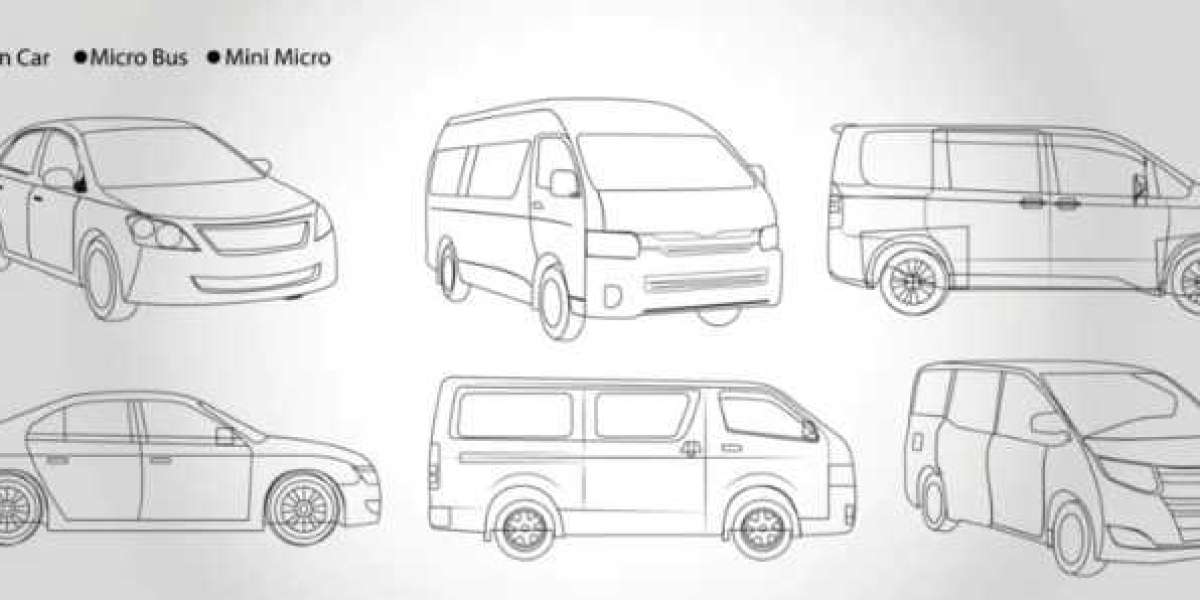The world of patents is a complex terrain, with various types of patents catering to different aspects of innovation and creativity. Two common types of patents, utility patents, and design patents, serve distinct purposes. In this comprehensive guide, we will delve into the realm of patent drawings, specifically comparing utility patent drawings with design patent drawings. We’ll explore their differences, purposes, and requirements, and provide practical insights into how to create effective drawings for each type of patent.
Utility Patent Drawings: Unveiling the Technical Essence
When it comes to securing a utility patent for your groundbreaking invention, the importance of clear and comprehensive utility patent drawings cannot be overstated. These drawings are the visual bridge between your innovation’s complex technical details and the legal documentation required for patent protection. In this article, we will delve into the world of utility patent drawings, understanding their significance, requirements, and how they contribute to the patent application process.
The Visual Blueprint of Innovation
Utility patent drawings serve as the visual blueprint of your invention. While the written description outlines the invention’s functionality, components, and methods, the drawings provide a tangible representation that allows patent examiners and experts to visualize your creation. They are especially crucial for inventions in fields where intricate mechanisms, structures, or processes are involved.
The Role of Utility Patent Drawings
- Enhancing Clarity: Written descriptions can sometimes be complex and challenging to grasp. Well-crafted drawings simplify this complexity by offering a visual breakdown of the invention’s components, relationships, and overall design.
- Enabling Replication: One of the fundamental principles of patents is that they must enable a person skilled in the relevant field to replicate the invention. Utility patent drawings play a vital role in meeting this requirement, as they provide a step-by-step visual guide to recreating the invention.
- Supporting Patent Claims: Patent claims define the boundaries of your invention’s legal protection. Utility patent drawings help in illustrating these claims, providing visual evidence of the unique aspects that make your invention patent-worthy.
Requirements for Utility Patent Drawings
Creating utility patent drawings involves adhering to specific guidelines to ensure they are accurate, informative, and in compliance with patent office standards. Here are some key requirements to keep in mind:
- Clarity and Detail: The drawings must be clear, legible, and detailed enough to represent the invention accurately. Annotations, labels, and numbering should be used to highlight various components and their relationships.
- Accurate Scaling: Scale is crucial for maintaining accuracy. Drawings must be to scale, and appropriate measurements should be provided for key features.
- Multiple Views: In many cases, providing multiple views of the invention from different angles is necessary. This offers a comprehensive understanding of the invention’s three-dimensional aspects.
- Consistency: Maintain a consistent style throughout the drawings. Consistency ensures that the visual representation remains coherent and understandable.
- Black and White, Grayscale, or Color: Depending on the patent office’s guidelines, drawings can be submitted in black and white, grayscale, or color. Each choice has its benefits, with color being particularly effective in highlighting distinct features.
Design Patent Drawings: Capturing Aesthetic Innovation
In the realm of intellectual property, where innovation and creativity collide, design patents stand as a testament to the power of aesthetic ingenuity. These patents protect the unique visual appearance of an object, emphasizing the importance of form over function. Design patent drawings, as the primary visual representations of these innovations, play a pivotal role in capturing the essence of aesthetic creativity. In this article, we will explore the world of design patent drawings, their significance, requirements, and the art of encapsulating aesthetic innovation within their frames.
The Artistry of Design Patents
Design patents celebrate the artistry that goes into crafting the visual appeal of products and objects. Unlike utility patents that focus on functionality, design patents protect the ornamental and non-functional aspects of an invention. From the elegant curvature of a smartphone to the intricate patterns adorning a piece of furniture, design patents showcase the aesthetics that influence our interactions with everyday objects.
The Role of Design Patent Drawings
- Visual Clarity: Design patent drawings are more than just illustrations; they are a language of visual communication. They provide a clear and precise depiction of the design’s visual features, enabling examiners and viewers to understand its distinctiveness.
- Proof of Originality: To obtain a design patent, your design must be novel and non-obvious. Design patent drawings act as evidence of the design’s uniqueness, showcasing the distinctive elements that set it apart from existing designs.
- Legal Protection: Design patent drawings define the scope of protection for your design patent. They outline the boundaries within which competitors cannot create similar designs
Requirements for Design Patent Drawings
Creating design patent drawings requires careful attention to detail and adherence to specific guidelines. Here are some essential requirements to consider:
- Multiple Views: Design patent drawings usually include multiple views of the design. These views offer a comprehensive understanding of the design from various angles.
- Shading and Surface Ornamentation: Shading is crucial in design patent drawings, as it highlights the surfaces and contours that contribute to the design’s visual appeal.
- Line Thickness and Consistency: Lines in design patent drawings should be bold and consistent. This enhances the clarity of the drawing and emphasizes the design’s key features.
- Contextualization: In some cases, showing the design in context – such as how it fits within a larger product – can provide a more comprehensive understanding of its intended use and impact.
The Art of Capturing Aesthetic Innovation
Creating effective design patent drawings requires more than technical skill; it demands an artistic eye that can capture the essence of the design’s innovation. Here are some tips to consider:
- Focus on Key Features: Identify and emphasize the design’s key features that make it unique. Isolate these features and ensure they are represented in the drawings.
- Precision in Details: Pay attention to the smallest details, from intricate patterns to subtle curves. These details contribute to the design’s overall impact.
- Conveying Texture: Use shading and lines to convey the texture and materiality of the design. This adds depth and realism to the drawing.
Key Differences Between Utility and Design Patent Drawings
In the realm of intellectual property, patent drawings hold the power to transform complex concepts and designs into visual representations that can be easily understood and analyzed. Utility patent drawings and design patent drawings are two distinct types of illustrations, each serving a unique purpose within the patent application process. In this article, we will explore the fundamental differences between utility and design patent drawings, shedding light on their specific roles, content, and criteria for patentability.
- Focus and Purpose:
- Utility Patent Drawings:
Utility patent drawings are all about functionality and technical details. They elucidate how an invention works, its components, and the relationships between these components. The primary purpose of utility patent drawings is to enable a person skilled in the relevant field to comprehend the invention’s operation and construction.
- Design Patent Drawings:
Design patent drawings, on the other hand, center around aesthetics and visual appearance. They capture the ornamental design, unique contours, and surface ornamentation of an invention. The goal is to visually represent the visual features that set the design apart.
- Content and Detail:
- Utility Patent Drawings:
Utility patent drawings require comprehensive detailing. They must include annotations, labels, and numbering to explain the various components, parts, and mechanisms of the invention. These drawings aim to provide a clear and precise breakdown of the invention’s technical aspects.
- Design Patent Drawings:
Design patent drawings prioritize visual representation over exhaustive technical detail. While the drawings should still be accurate, they focus on illustrating the design’s overall visual impression and key ornamental elements. Intricate technical explanations are not necessary for design patent drawings.
- Criteria for Patentability:
Utility Patent Drawings:
For utility patents, the drawings are an integral part of the patent application’s support for the claims. These drawings contribute to proving the invention’s novelty, non-obviousness, and usefulness. They help patent examiners understand how the invention solves a specific problem and contributes to the field.
Design Patent Drawings:
In the case of design patents, the drawings are crucial in demonstrating the uniqueness and distinctiveness of the design. Design patent applications hinge on the visual differences between the proposed design and existing designs. The drawings play a vital role in convincing examiners that the design is original and deserving of protection.
Creating Effective Utility and Design Patent Drawings
In the intricate world of intellectual property, patent drawings stand as visual gateways to innovation, bridging the gap between complex ideas and tangible representation. Whether pursuing a utility patent to protect functionality or a design patent to safeguard aesthetics, the art of creating effective patent drawings is essential. In this article, we will delve into the key considerations and strategies for crafting utility and design patent drawings that accurately convey the essence of your invention.
- Utility Patent Drawings: Bridging Complexity and Clarity
Utility patent drawings serve as comprehensive blueprints of your invention, revealing the technical intricacies that make it unique. Here’s how to create utility patent drawings that effectively communicate your innovation:
- Detailed Representation: Precision is paramount. Detail each component, mechanism, and relationship with accuracy, utilizing annotations, labels, and numbering to enhance clarity.
- Accurate Scaling: Maintain proper scaling to ensure that proportions are faithfully represented. Accurate measurements help patent examiners and experts understand the invention’s physical attributes.
- Multiple Angles: Provide multiple views of the invention from different angles. This offers a well-rounded understanding of the invention’s three-dimensional nature.
- Consistency: Maintain a consistent style throughout the drawings. This ensures that the visual representation remains coherent, aiding understanding.
- Design Patent Drawings: Capturing Aesthetic Essence
Design patent drawings are artistic representations that celebrate the aesthetics of your creation. When crafting design patent drawings, consider the following:
- Showcase Unique Features: Highlight the distinctive visual features that set your design apart. Emphasize these features through shading, lines, and appropriate contrast.
- Surface Ornamentation: Design patent drawings should capture surface ornamentation, texture, and patterns that contribute to the design’s appeal. Utilize shading techniques to convey depth and visual richness.
- Bold Lines and Consistency: Use bold lines and ensure consistency in line thickness. This enhances the drawing’s clarity and emphasizes key design elements.
- Contextual Presentation: In certain cases, provide context by showing how the design fits within a larger product or environment. This contextualization aids in understanding the design’s intended use.
- Mastery of Tools and Software
Both utility and design patent drawings often require specialized tools and software. For utility patents, Computer-Aided Design (CAD) software helps in creating accurate and professional drawings. Design patent drawings might demand graphic design tools for precise shading and detailing.
- Adhering to Patent Office Guidelines
Both types of patent drawings must adhere to specific guidelines set by patent offices. These guidelines address everything from paper size and format to resolution and labeling. Thoroughly understanding and complying with these guidelines is crucial for a successful patent application.
- Professional Assistance
If you’re unsure about your drawing skills or lack experience in creating patent drawings, consider seeking professional help. Patent illustrators and graphic designers who specialize in patent drawings can ensure that your drawings meet the required standards and effectively represent your invention.
Conclusion
In the realm of intellectual property, patent drawings are the silent storytellers that bring innovation to life. Whether you’re navigating the world of utility patents or design patents, the significance of these drawings cannot be overstated. They serve as the visual keys that unlock the doors to protection and recognition. As we conclude our exploration of creating effective utility and design patent drawings, let’s recap the essential takeaways.
- Purposeful Precision:
Utility patent drawings delve into the technical intricacies of an invention, while design patent drawings celebrate its aesthetic allure. Approach each type of drawing with a purposeful precision that captures the essence of your innovation. - A Visual Language:
Understand that patent drawings speak a unique visual language. They bridge the gap between complex concepts and tangible representation, offering a comprehensive view of your invention. - Technical Excellence:
For utility patent drawings, technical excellence is non-negotiable. Detail every component, mechanism, and relationship with accuracy, creating a visual roadmap for experts to comprehend your innovation. - Aesthetic Ingenuity:
Design patent drawings are a canvas for your aesthetic ingenuity. Focus on highlighting the unique visual features, surface ornamentation, and textures that define your design. - Tools and Compliance:
Master the tools and software required for creating patent drawings, ensuring accuracy and professionalism. Adhere diligently to patent office guidelines, as they provide the blueprint for meeting submission requirements. - Seeking Expertise:
When in doubt, seek professional expertise. Patent illustrators and graphic designers specializing in patent drawings can help you craft drawings that align with your vision and meet patent office standards. - Bridging Innovations and Legal Protection:
Whether you’re unraveling the technical essence of a utility invention or capturing the aesthetic essence of a design, patent drawings play a pivotal role in bridging innovation and legal protection.
In the dynamic landscape of innovation, patent drawings stand as your voice in the realm of intellectual property. They tell the story of your creativity, your ingenuity, and your commitment to advancing human progress. By mastering the art of creating effective patent drawings, you pave the way for your ideas to shine on the global stage, leaving an indelible mark on the tapestry of human achievement.
Read More:








